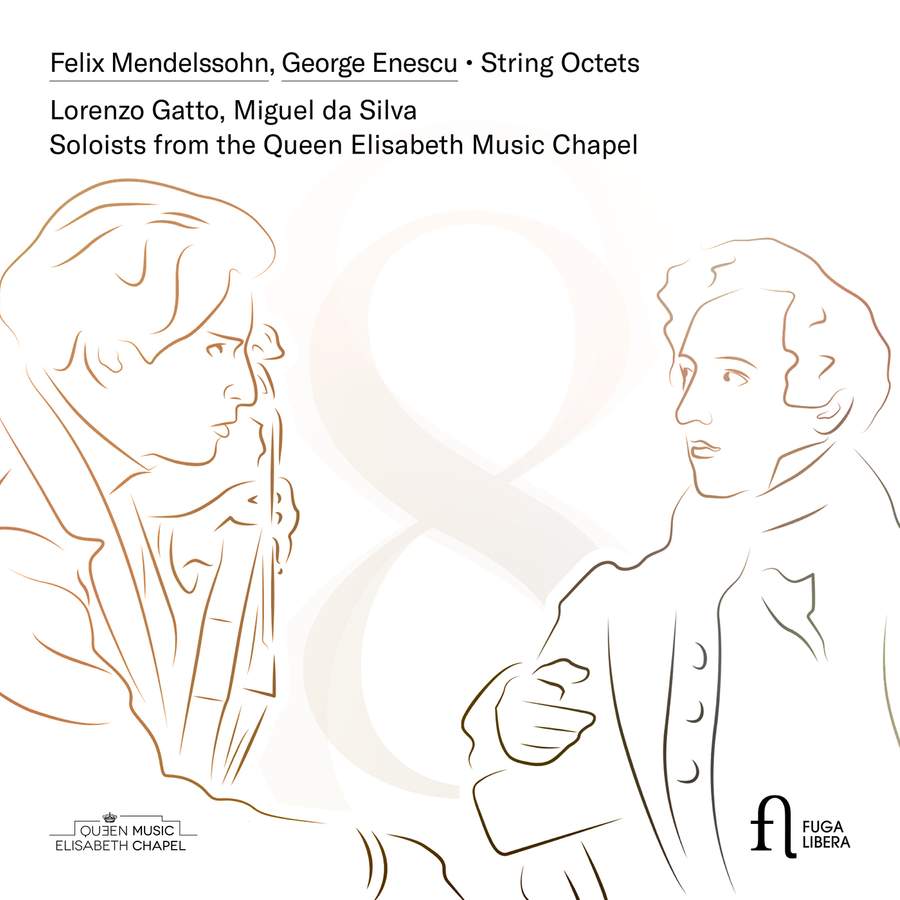Dieses von der Chapelle Musicale Reine Elisabeth initiierte Projekt führt etablierte Künstler, wie Miguel da Silva, Lorenzo Gatto mit jungen Musikern zusammen, die aktuell an der Chapelle eingeschrieben sind. Damit wird die Weitergabe der Erfahrung ermöglicht. Die Werke, die Oktette von Enescu und Mendelssohn, bieten daneben die Möglichkeit, ein größeres Ensemble zu bilden. Und die beiden Komponisten, beide selber jugendlich, als sie diese Werke schufen, bilden insoweit eine Brücke zu den jungen Solisten.
Die beiden erfahrenen Streicher finden sich auf der Besetzungsliste für Mendelssohn, wie folgt: Lorenzo Gatto, Karen Su, Luka Ispir, Anna Egholm, Miguel Da Silva, Violaine Despeyroux, Riana Anthony, Zachary Mowitz. Das Oktett von Enescu wurde mit Edoardo Zosi, Liù Pelliciari, Amia Janicki, Emmanuel Coppey, Benedetta Bucci, Miguel Da Silva, Stefano Cerrato, Riana Anthony eingespielt.
Mendelssohn erfährt eine durchaus gelungene Einspielung, bei der flinke Finger der linken Hand und bewegliche Bögen der rechten den jugendlichen Überschwang des Werkes ohne Probleme bewerkstelligen. So entstand eine locker dahinfließende Deutung, an der man nichts aussetzen kann.
Das Oktett von Enescu ist im Tonfall deutlich moderner und damit für manche Ohren vielleicht nicht so gefällig. Doch die Nachwuchsinterpreten widmen sich dem Werk mit Hingabe und bieten alle ihre Fähigkeiten auf, so dass sie eine intensiv nachvollziehbare Sicht auf dieses Werk vorlegen. Auch hier darf man eine gelungene Darstellung attestieren.
Wer keine herausragenden Besonderheiten der Interpretation oder dezidiert solistische Leistungen erwartet, darf sich an rundum gelungenen Interpretationen erfreuen.
This project, initiated by the Chapelle Musicale Reine Elisabeth, brings together established artists, such as Miguel da Silva, Lorenzo Gatto with young musicians currently enrolled at the Chapelle. This allows for the sharing of the experience. The works, the octets of Enescu and Mendelssohn, offer the possibility to form a larger ensemble. And the two composers, both youthful themselves when they created these works, in this respect form a bridge to the young soloists.
The two experienced string players are found on the Mendelssohn cast list, as follows: Lorenzo Gatto, Karen Su, Luka Ispir, Anna Egholm, Miguel Da Silva, Violaine Despeyroux, Riana Anthony, Zachary Mowitz. Enescu’s octet was recorded with Edoardo Zosi, Liù Pelliciari, Amia Janicki, Emmanuel Coppey, Benedetta Bucci, Miguel Da Silva, Stefano Cerrato, Riana Anthony.
Mendelssohn receives a thoroughly successful recording in which nimble fingers of the left hand and agile bows of the right manage the youthful exuberance of the work without problems. The result is a loosely flowing interpretation of which there is nothing to criticize.
The octet by Enescu is clearly more modern in tone and therefore perhaps not so pleasing to some ears. But the young interpreters devote themselves to the work with dedication and offer all their abilities, so that they present an intensely comprehensible view of this work. Here, too, one may attest to a successful performance.
Those who do not expect any outstanding features of interpretation or decidedly soloistic performances may enjoy all-around successful interpretations.


















